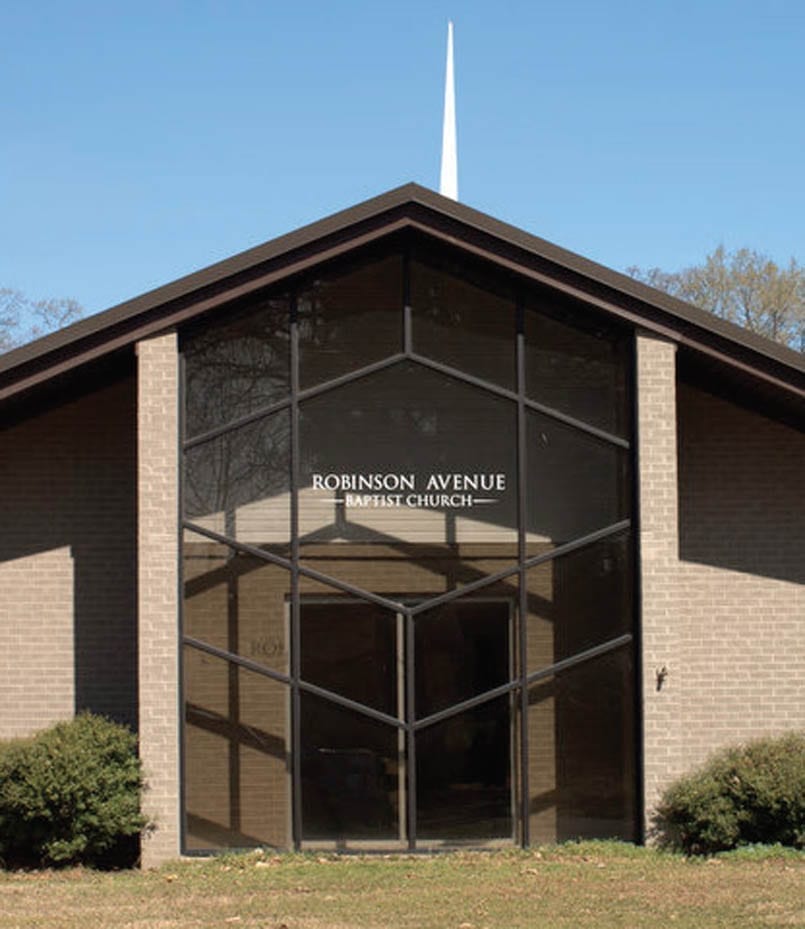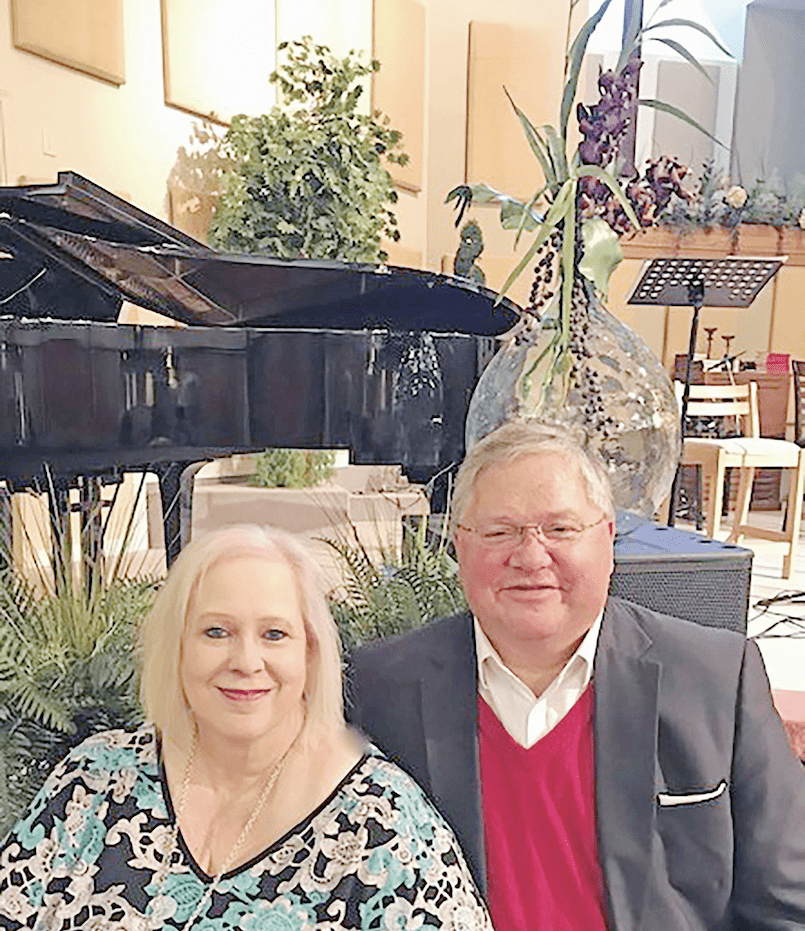25 Mar 2020 Sharing my small church experience

by Vivian Lawson Hogue
I was christened and later baptized in a large, beautiful local church, but was very familiar with our parents’ small country churches. My church had a massive pipe organ; the country churches had a clinky piano or maybe not. My church had steam heat and impressive light fixtures; the country churches had wood or gas stove heat and hanging light bulbs. My church had lovely stained-glass windows; the country versions were proud of their panes of old, wavy clear glass.
As a lover of classical music, I was captivated by our big-church music even as a child. You know – Mozart, Bach, Beethoven and others who were not “one-hit wonders.” Conversely, it was the small church renditions of the old hymns that inspired me with wonderful tunes and exquisite, poetic lyrics.
I observed many other differences including indoor bathrooms vs. outhouses; water fountains vs. water buckets with dented dippers; and brass collection plates vs. whatever change jingled in the pocket of a hill man’s worn overalls. But oh, how the country preachers could preach and teach! Some waved their ragged Bibles as if to say, “Here’s your proof!” For better or worse, they swayed as they heartily sang the ancient, mostly English and Scot hymns.
The word “church” as a structure was not always called such. The word originally meant a single band of believers, non-denominational in theory. The Apostle Paul spoke of the Church as being “one body with many members.” People gathered to worship, not to make an appearance or to sit in a certain pew, but to learn about and worship their God. In fact, they had no seating except perhaps on the ground, certainly not on plush cushions.
In early scriptures a place of worship was on a hill, at a riverside, perhaps in a temple without air-conditioning, but “conditioned by air.” Some would later worship in secret in caves, tunnels and forests. In some countries it is still necessary today.
Today the place of worship, or “church,” is more often the building of a denomination. I have observed our local churches increase in number, members and physical size. In my childhood, our town enjoyed small congregations as well as what today would be considered “mega-churches.” These comparisons came to mind recently when I had an opportunity to speak with the pastor of a local small church. Pastor John Burleson ministers to his congregation at the Robinson Avenue Baptist Church at Robinson Avenue and Mitchell Street in the Robinson Historic District. My memory still sees two residences that once occupied the spot where this modern, tree-shaded, Southern Baptist church now stands.
Burleson, one of six siblings and a native of Pine Bluff, and his wife, Tammy, have two grown sons with families who live elsewhere in the state. He attended Conway’s Central Baptist College, receiving a degree in Bible with a minor in history in 1986. Pastor Burleson served his first church in Carlisle in 1980, followed by Pine Bluff, Damascus, Camden and Greenbrier, to which they came in 2011. He and Tammy brought a refreshing presence to the Robinson Avenue Baptist Church in 2018. He is also employed as a construction inspector with the Arkansas Department of Transportation and, when he has time, enjoys woodworking and playing golf. Tammy is a branch office administrator with Edward Jones in Greenbrier.
Burleson is, by members’ statements, a patient teacher and explainer of the Bible with his knowledge, excitement and humor. Each Sunday his attendees are equipped with their “textbooks” and highlighters. Occasional “amens” punctuate teachings. The genuinely friendly members sing the old songs and welcome visitors to share in their uplifting hour of teaching and encouragement.

Of course, there are a few hurdles involving finances, as have most small churches. Then there are governmental issues because churches are considered “businesses.” In recent years, churches in local residential neighborhoods are limited in sign dimensions, sometimes causing a lack of notice by potential members.
Large churches of various denominations are considered to be megachurches if their members number 2000-plus. Even at Pentecost, this was not unusual! Some churches of the 1500s through the early 1900s had from 5,000 to 10,000 worshippers. Today, churches of those sizes often have satellite campuses.
Renowned pastor Jack Graham is a native of Conway and a former member of Conway’s First Baptist Church. He now ministers to the 30,000-member Prestonwood Baptist Church in Plano, Texas. Even he says, “An important aspect of leading a large church is making sure people are connected to the church, not just letting them become faces in the crowd.” He must train others to help toward that aim, all the while composing his messages and overseeing the church’s Facebook and website as well as finances regarding employees and church maintenance. Our local megachurches and small churches must do that, too, but with many fewer members and less finances.
Pastor Burleson says, “I think the greatest need in smaller churches is people who are willing to serve. They share similar needs with larger congregations, but have a smaller pool of workers from which to draw.”
He adds, “Having served in both large and small churches, I would also say that the commitment to church attendance can be a little more obvious in smaller congregations. The absence of a couple of families might constitute 10 percent of attendance that day. If those absentees fill positions of service, the issue is compounded. But you have to balance those absences with the need for people to get away for vacation, family events and other ways for them to recharge.”
He further states, “I’m not convinced that the size of a given church is as important to God as we may think. I’ve seen the Lord’s blessings in both. We possibly waste energy arguing the merits of church size. To my ‘bigger-is-better’ friends, I would say Jesus started with 12. For my ‘smaller-is-more-spiritual’ friends, I remind them that the church at Jerusalem was quite large. Regardless of size, every church has the same calling – to obey the Great Commandment (Matthew 22:37-39) while fulfilling the Great Commission (Matthew 28:19-20). Here is where I am convinced our collective energy should be spent.”
If one visits a church, there are questions that could be considered. Is it conveniently located? What is one’s first impression? Are teachings biblically faithful? Is it helpful to take a Bible with you? Does the worship format and type of music matter? Are the members and staff congenial? Do you feel they want to know you better and would want to help in sickness or strife? Are you willing to serve? A matter for myself is, even if it is time for dismissal and Cracker Barrel is open, would I rather stay and hear more teachings?
In my country church experience, members stayed until the last shaped-note was sung, the latest new baby was admired and it was time to go wring a hen’s neck for a late Sunday dinner. Actually, even Cracker Barrel couldn’t beat that.
- And that’s what Christmas is really all about - December 2, 2025
- Giving thanks - November 4, 2025
- Giving up was not an option - September 30, 2025










